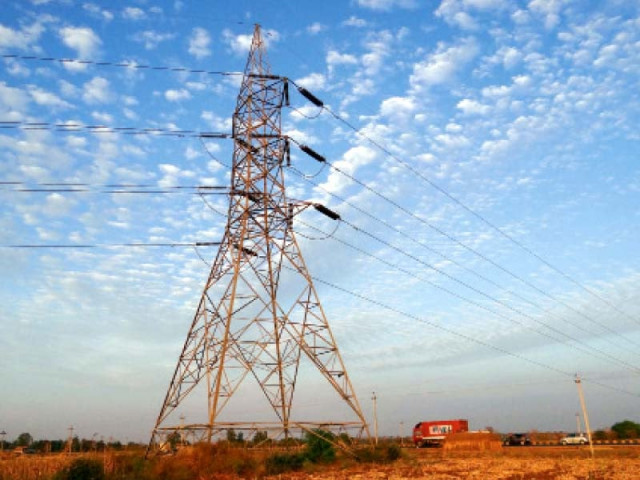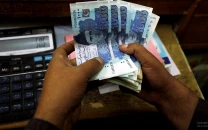Circular debt also hits CPEC projects
Government unable to clear payment of energy projects worth Rs188b

The China Pakistan Economic Corridor (CPEC) power projects are also hit by the circular debt and the government has not been able to clear Rs188 billion due payments in breach of a bilateral energy framework agreement.
Although, the outstanding payments are only 18.4% of the billed amount, it has started affecting the financing models of the Chinese sponsors of the Independent Power Producers (IPPs), set up under the CPEC agreement.
“Pakistan has so far paid Rs832 billion on account of power purchase price to the Chinese IPPs,” Special Assistant to Prime Minister on Energy Tabish Gohar told The Express Tribune. Gohar said that the Central Power Purchase Agency Guaranteed (CPPA-G) could not clear Rs188 billion worth dues.
The outstanding amount is only 18.4% of the total billed amount of Rs1.02 trillion, which is not a very large sum, he added. The PM’s aide said that 82% payment ratio was very good given the fact that total outstanding circular debt has increased to Rs2.6 trillion.
Under the CPEC Energy Framework Agreement, Pakistan was supposed to set up a CPEC Revolving Fund equal to 22% of monthly invoice, which shall be backed by the sovereign guarantees provided by the Ministry of Finance.
The purpose of the fund was that in case the power purchaser fails to make payments, the dues of the Chinese firms will be settled against this account to ensure uninterrupted payments to Chinese sponsors of energy projects. Pakistan and China had signed CPEC Energy Framework Agreement in November 2014.
“We could not establish the Revolving Fund,” said Gohar.
The circular debt, which was Rs1.15 trillion in June 2018, has swelled to Rs2.6 trillion. The government has now made a three-pronged strategy to reduce this debt to June 2018 level in the next two years. The strategy that talks about improving efficiency, timely payment of subsidies and increasing tariffs has yet to test the waters.
READ Debt servicing surges to Rs2.1tr
Under CPEC, a 300 megawatts coal-fired power plant has also been planned to be set up in Gwadar, which is now facing significant delays.
One of the reasons behind delay in start of the construction work on the Gwadar coal project was default on the guarantees issued by China Export and Credit Insurance Corporation (Sinosure), said Gohar.
Sinosure had charged 7% fee on the insurance of the loans given to the Chinese companies that set up CPEC power projects.
But Gohar said that Gwadar imported coal project should not be constructed. If firm commitments have been given, these would be honoured, he added.
Against an investment of $300 million in the project, Pakistan would return $1 billion in the next 20 years, said the special assistant. Gohar maintained that the Gwadar power plant-II would not be installed, as the government has banned imported-coal based power projects.
Gohar said that the Power Division proposed that the government can provide electricity to Gwadar by extending National Transmission and Dispatch Company network. The project can be funded from the budget, he added.
Gohar said that the government has also downgraded the Chashma-5 nuclear power project from a committed to a candidate project.
This has been done under the National Electricity Policy, being approved as part of a loan condition of the World Bank.
“The nuclear generation capacity additions, shall be incorporated in the IGCEP on the basis of cross-sectoral decisions by way of consultative process, taking into account inter alia, economics of generation, resultant tariff, and demand of the sector,” according to the policy.
Gohar said in future only those nuclear power projects will be set up, which are economically viable. In case some projects are strategically important then the Ministry of Finance will have to allocate budget.
The government now plans to undertake only those projects that have achieved letter of support and are required to fulfil COD deadlines, projects that have specific timelines under the government to government and multilateral arrangements.
The government also has a plan to China to consider restructuring of the $3 billion IPPs repayments for 10 to 12 years. The initiative is part of the hosts of proposals that the PTI government is exploring to minimise tariff increase requirements estimated in the range of Rs4.60 to Rs5.65 per unit under a recently approved Circular Debt Management Plan.
China has set up 12 power plants under CPEC and the repayments of the Chinese debt are included in the electricity tariffs.
Published in The Express Tribune, May 9th, 2021.
Like Business on Facebook, follow @TribuneBiz on Twitter to stay informed and join in the conversation.


1728020501-0/Express-Tribune-Web-(13)1728020501-0-208x130.webp)
















COMMENTS
Comments are moderated and generally will be posted if they are on-topic and not abusive.
For more information, please see our Comments FAQ